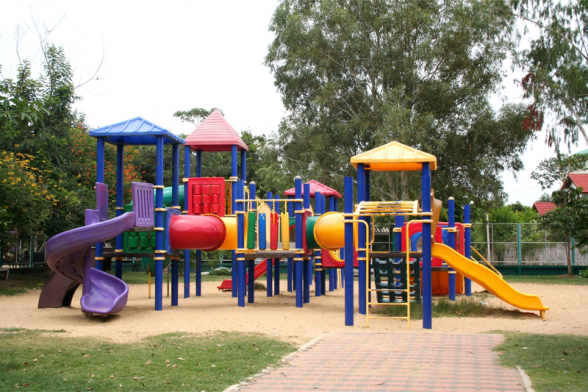


It is no secret that children have the wildest imagination which can be evidently seen on how they act in the local playground. It is a joy to see how determined these children are in their pursuit of adventure. However, parents and guardians alike cannot help but feel worried about the exploration as their children use the play equipment in a manner out of its primary intent.
Unfortunately, no matter how well play equipment is designed for safety, the very nature of play makes accidents inevitable. According to the Centers for Disease Control and Prevention (CDC), over 20,000 children are treated at the hospital emergency department for playground-related injuries. One of the primary injuries is due to falls. This is why playground surfacing is very important.
Playground Surfacing
Playground surfacing can make a huge difference for children's safety and yet, it is one of the most overlooked factors in playground design. Playground surfacing should be given the same value as playground equipment.
Playground surfacing materials are categorized into two main types namely unitary and loose-fill materials. Unitary materials are typically made of rubber mats or tiles while loose-fill materials are usually made from wood chips and mulch, sand, pea gravel, and shredded rubber. Take note that sand and pea gravel are considered to be poor choices because of its low fall height protection value and risk to choking while asphalt, cement, and grass are not acceptable surfaces for the playground.
Playground experts highly recommend the use Soft Surfacing Materials. To ensure your surfacing needs are met, make sure to ask the following questions:
By default, most unitary materials meet ADA requirement while only some of the loose-fill materials do. If your choice of play surface material is loose-fill then you need to pay attention to this factor.
Impact attenuation refers to the ability of a surfacing material to absorb cushion fall or impact. The standard for impact absorbing properties for playground surface allows a maximum Head Injury Criteria (HIC) reading of 1000 and a maximum GMAX reading of 200. Your choice of material must provide values below the specified numbers.
To achieve long-term quality performance, you must look for a surface material with at least 10 years warranty. Make sure to carefully evaluate the warranty. One of the best ways to do this is to conduct periodic field testing.
Every playground requires a resilient and safe surfacing to protect the welfare of the users. It is thereby important to hire a specialist in Playground Surfacing for Playground Safety Distributor to provide maximum safety.
Do you have a question about playground surfacing? Play Surface Distribution is here to help! Make sure to comment below.